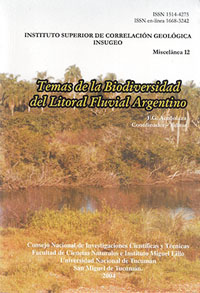Miscelánea 12
Alcide D´Orbigny (1802-1857) y la biodiversidad del Litoral fluvial argentino
Para adquirir la publicación haga click aquí
Abstract
ALCIDE D´ORBIGNY (1802-1857) AND THE BIODIVERSITY OF ARGENTINEAN FLUVIAL COAST. During D’Orbigny’s travels in South America between 1826 and 1833 he visited the Parana River, collected thousands of animals and plants and made important geological, biological, paleontological and social observations. His navigation and observations were the first one of a professional scientific naturalist. Before D’Orbigny two other persons made important work in the region: Jose Francisco Sánchez Labrador and Félix de Azara, both from Spain. D’Orbigny recognized and later introduced the concept of stages and zones to stratigraphy and attempted the first subdivision of the Jurassic and Cretaceous, based on invertebrate fossils. These concepts were also applied in his monumental work “Paleontologie Francaise”. His descriptive observations on the paleontology of the Caribbean region were some of the first published accounts. All of these works are especially noted for the fine details in the plates, maps and profiles. Of his works on South America, by far the most important were his volume and atlas on the geology. Some of the first attempts at the stratigraphy and geology of South America are to be found within this work. Here, I made an analysis on the biodiversity aspects as well as ecological and environmental ideas of the D’Orbigny travels on Parana River and tributaries.




